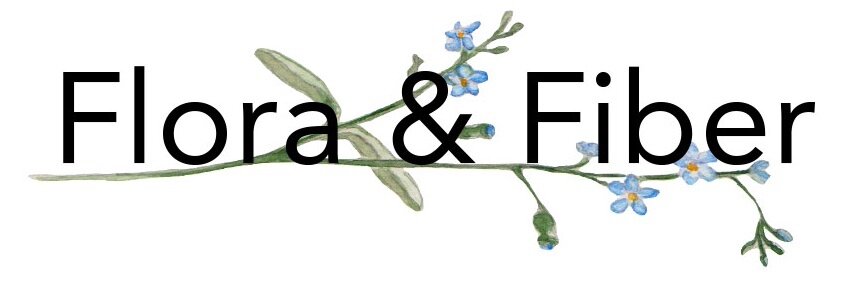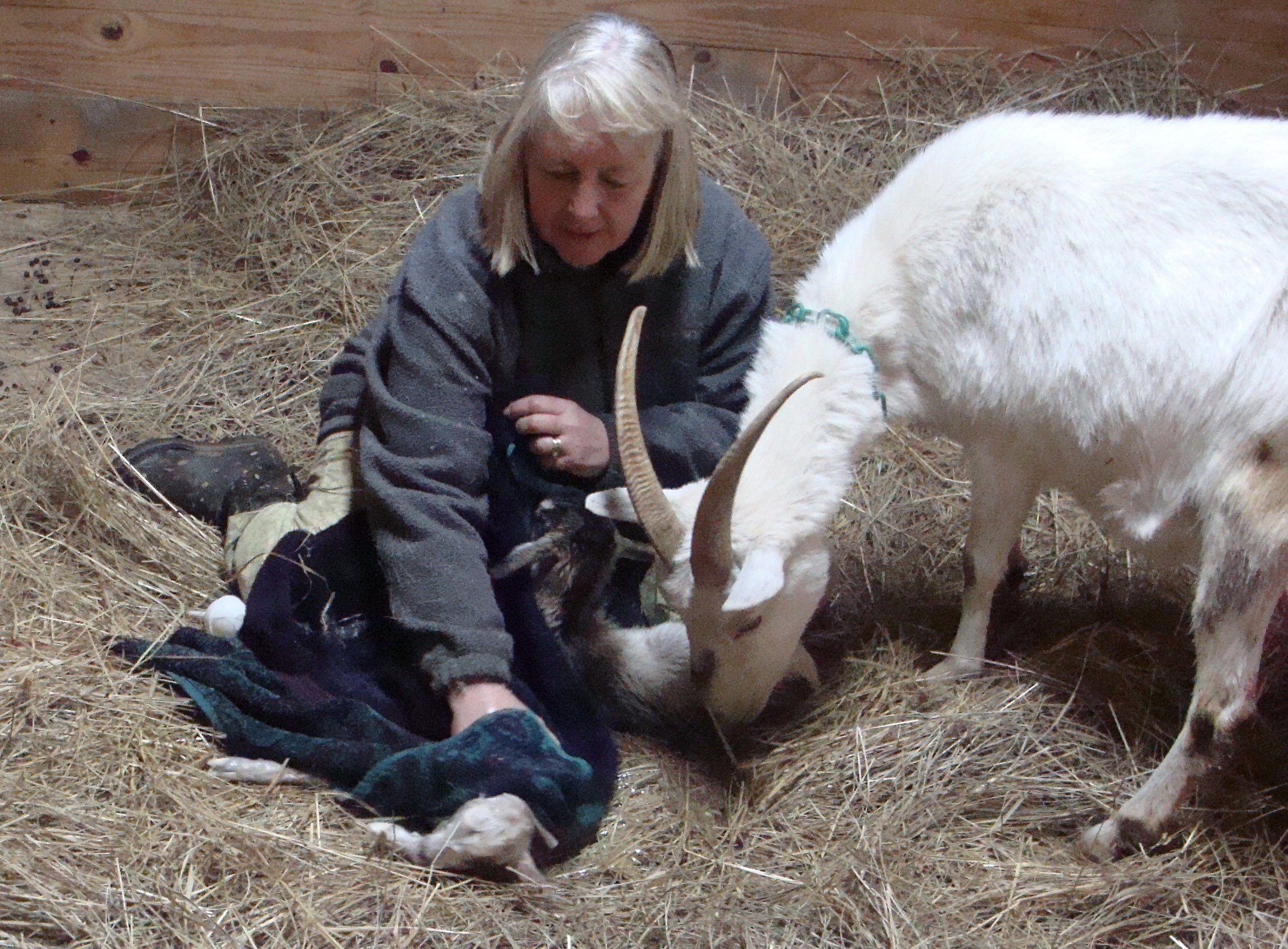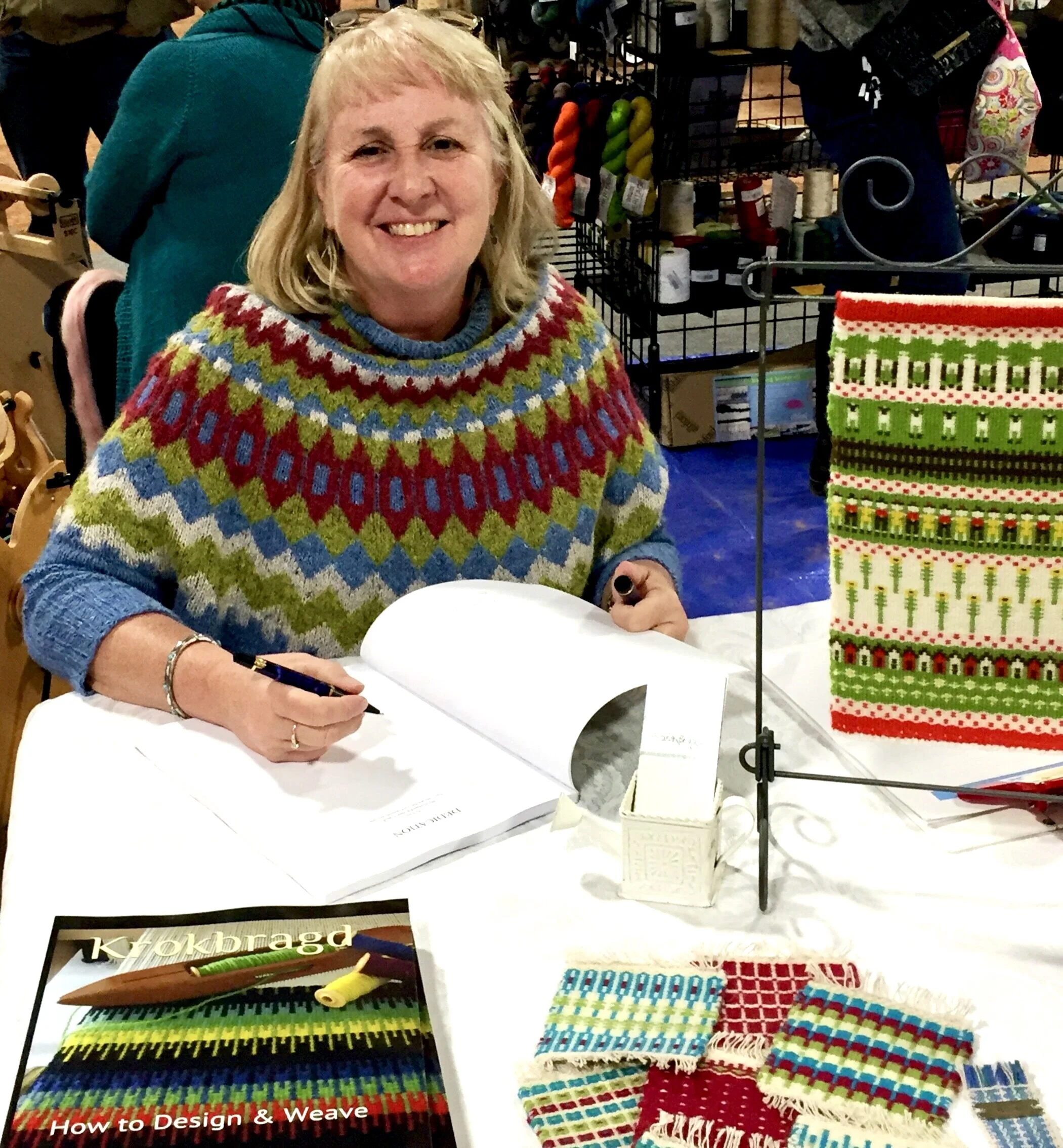Krokbragd and the Rigid Heddle
In my last post, I talked about achieving the milestone of selling ten thousand books (now 10,636 :-)). Reflecting on this, I reviewed the many comments and questions I have received since I first published in 2019. Many of the questions I received were about weaving krokbragd on a rigid heddle. So, today’s post will focus on that topic.
In the Introduction of my first book, Krokbragd: How to Design & Weave, I wrote:
In writing this book, I’ve assumed that you have a basic knowledge of weaving terminology and fundamentals, including the ability to warp you loom. If you are new to weaving, there are a plethora of ‘learn to weave’ books and videos available. I’ll include some of my favorites in the Resources section.
page ii
There were several reasons for my decision not to cover the basics. First, numerous books, videos, magazine articles, and online resources cover weaving terminology and the fundamentals of weaving. I have gained most of my knowledge on these topics from this wealth of weaving information. It would be redundant for me to repeat what has already been well-explained by others.
Secondly, when I buy a resource on a specific weaving topic, such as overshot or lace weaves, I expect to learn about that particular topic and how to weave it. I prefer not to wade through (and pay for) general weaving information. I either already know it or can find it in one of the aforementioned resources. Therefore, my intention in writing my first book was to concentrate on the design and weaving of krokbragd.
I stuck to that decision when discussing weaving krokbragd on multi-shaft looms. But, in the chapter on 'Krokbragd on a Rigid Heddle,' I veered from my original plan and delved into more detailed coverage of rigid heddle weaving and set-up fundamentals. My mistake! I recognize that my explanations were sometimes confusing. This played a significant role in the questions that readers had. The proverbial 'Hindsight is 20-20' is oft-stated, and for good reason. I should have stayed true to my original course.
An analogy. Over 40+ years in healthcare, I worked as a nurse and a nurse practitioner in acute and critical care. Friends, family, and neighbors would ask me about topics unrelated to my practice, such as baby delivery. While I do possess a basic understanding of general anatomy and physiology and general medical care, I am not the best source for detailed information and instruction on pregnancy. When faced with Lily, one of my precious goats, having difficulty delivering her baby, I googled 'goat delivery not progressing' and watched the YouTube video. My years of experience and ability to stay calm and not get squeamish in such situations helped. But, I had to look to someone who could give me the information I needed for successfully reaching into her birth canal and turning her breach buck.
As such, I can offer tips for weaving krokbragd on a rigid heddle, but there are experts in the fundamentals and nuances of rigid heddle weaving that you should check out. I can recommend those who I have found most helpful (see end of post).
I considered creating a revised edition of my book to clarify some of my explanations, but I felt it wouldn't be fair to those who have already bought the original. Instead, I will share what I would include in the revision here and as a PDF download.
Krokbragd on a Rigid Heddle Loom
On “shaft looms,” a shaft is raised and/or lowered to create the shed through which the weft yarn will pass. On a rigid heddle loom, sheds are made by raising or lowering the rigid heddle. When the heddle is in the UP position, the threads in the holes are raised, the shuttle passes through the shed, and the weft covers half of the warp threads. When the heddle is in the DOWN position, the threads in the slots are raised, the shuttle passes through the shed, and the weft covers the other half of the warp threads. When the heddle is NEUTRAL, no shed is created. This creates two sheds and allows weaving 2-shaft structures, such as plain weave.
Traditional krokbragd is a point twill woven on three shafts. So, to weave krokbragd, you need a loom with a minimum of three shafts OR the ability to make three different sheds. You make a shed by raising or lowering the rigid heddle, and then you can create additional sheds with pick-up sticks, heddle rods, or a second heddle. (Krokbragd can also be woven with three rigid heddles, but I have no experience.)
Method 1 - Pick-up with 2 Pick-up Sticks
Krokbragd can be woven with one heddle and two pick-up sticks. The slot threads freely move in the rigid heddle and, therefore, can be manipulated with a pick-up stick to create additional sheds. So, to weave krokbragd with this method, the threads in the holes are one shed, then some of the threads in the slots are picked up with pick-up stick A to create a second shed, and the remaining slot threads are picked up with pick-up stick B to create a third shed. Voila! The three sheds simulate the three shafts needed to weave krokbragd.
Method 2 - Pick-up with 1 Pick-up Stick & Heddle Rod
When weaving with 2 pick-up sticks, stick B must be inserted and removed each time so pick-up stick A can slide forward when needed. Krokbragd is a slow weave. Adding the removal and then repicking of warp threads further adds to the slowness and, for some, may become tedious. A heddle rod with string heddles (loops) can be used to avoid re-picking with Stick B. The heddle rod picks up the threads that would be picked by Stick B once at the beginning of the weave, and then the heddle rod is lifted when that shed is needed.
Method 3 - Double Heddle
Another way to weave krokbragd on a rigid heddle is to use two (aka double) rigid heddles. Warping, specifically threading, is a bit more complex, but double heddles eliminate the need for string heddles or re-picking with the second pick-up stick.
Setting up a Rigid Heddle Loom for Krokbragd
Traditional krokbragd is a point twill woven on three shafts. Let’s look at a draft traditionally used for shaft weaving.
In this diagram, the warp threads are black. You can see these along the top labeled as threading. Notice the order in which the warp threads are threaded: 1,2,3,2, repeat 1,2,3,2, repeat 1,2,3,2, etc. This is a four-thread repeat. When you look at the threading, it looks like an upside-down ‘V’—in other words, a Point.
Since there are not different shafts to thread on a rigid heddle loom, we need to mimic that same point threading. Think of it this way: Shaft 1 = Shed 1. Shaft 2 = Shed 2. and Shaft 3 = Shed 3. The hole threads will account for half of the warp threads and correspond to shaft two. That means the slot threads correspond to shaft one or shaft three; which one of those shafts depends on what slot threads are up or down.
Along the right side of the draft is the treadling sequence. Each weft pick covers the warp threads on the single shaft that is down. In other words, the weft threads go over and cover the warp threads on the shaft (or shed) that is down and go under the warp threads that are up. Shaft or Shed 1 down. Shaft or Shed 2 down. and Shaft or Shed 3 down. Repeated over and over. Patterns are built by varying the weft color choices in this three-pick sequence.
KEY TO WEAVING KROKBRAGD
The weft pick covers the warp threads
that are DOWN.
This is the color that will show on the surface of your design.
This is my key to understanding the color placement and pattern development of krokbragd. The color that will show is the weft color that covers the warp threads that are DOWN. This is true no matter how you get to those warp threads being down, whether by raising the other shafts as with a countermarche loom, lowering that shaft as in a jack or sinking shed loom, or picking up the other sheds with a pick-up stick on a rigid heddle. Whatever warp threads that are DOWN will be covered by the color of the weft pick that is thrown.
In review, there are three essentials when weaving krokbragd.
you must be able to make three sheds
you must thread or sley the rigid heddle so that the repeat of these sheds is 1,2,3,2
you must weave the three sheds in the same repeat order: 1,2,3
These are the exact requirements for weaving krokbragd on a shaft loom. The difference is in how these essentials are accomplished.
General Tips
A few general tips for weaving krokbragd on a rigid heddle loom. First, remember that the rigid heddle serves multiple functions. It not only creates the shed and acts as the beater, but it also determines the sett. Also, remember that you can generally not beat as hard on a rigid heddle loom as you might on a floor or table loom, so a hand beater may help press the weft into place.
Resources
Kelly Casanova
“Weaving Krokbragd on a Rigid-Heddle Loom.” Little Looms, Summer 2024.
“42 Rigid Heddle Loom Tips.” Kelly Casanova (blog), April 2024. https://kellycasanovaweavinglessons.com/2024/04/42-rigid-heddle-loom-tips.html.
“How to Use Pick up Sticks.” Kelly Casanova (blog). https://kellycasanovaweavinglessons.com/2019/06/how-to-use-pick-up-sticks.html.
“How to Read a Rigid Heddle Weaving Draft.” Kelly Casanova (blog). https://kellycasanovaweavinglessons.com/2021/01/how-to-read-a-rigid-heddle-weaving-draft.html.
Liz Gipson
“How Ends Travel in Multiple Heddles to Form Sheds.” Yarnworker (blog), April 3, 2024. https://yarnworker.com/how-ends-travel-in-multiple-heddles-to-form-sheds/.
“Sett In A Multi-Heddle World.” Yarnworker (blog), March 8, 2023. https://yarnworker.com/threading-part-two-sett-in-a-multi-heddle-world/.
“Reading a Pick-Up Pattern.” Yarnworker (blog), June 20, 2018. https://yarnworker.com/reading-a-pick-up-pattern/.
Jane Patrick
The Weaver’s Idea Book: Creative cloth on a rigid heddle loom. (2010)
There are many ways to set up and weave on a rigid heddle. In my first book, I presented a method. I have to admit that it was a bit confusing, especially when trying to use it for some of the projects. In my sequel book, Krokbragd Patterns, I introduced a universal method for preparing the loom (threading, tie-up, treadling) that allows the same pattern to be woven across all types of looms (rigid heddle, sinking shed, rising shed). I plan to share this information in a future post. I also plan to rewrite Project 2 - Coasters in Krokbragd: How to Design & Weave.
I hope this helps. Don’t forget you can download the Krokbragd on a Rigid Heddle pdf.











